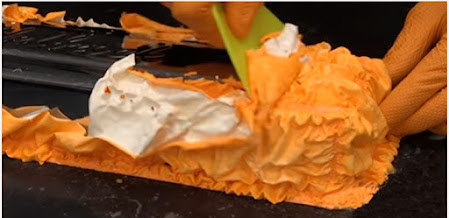Why Every Welding Professional Should Be Using Anti Spatter Spray
In welding, efficiency, accuracy, and safety are the most important. However, one recurring problem still keeps both new and experienced welders alike —spatter. Those little molten metal droplets that splatter off while welding can not only mar the work surface but also drive cleanup time longer and weaken the integrity of the weld. The answer? Anti-spatter spray.
If you're a welder who hasn't yet adopted anti-spatter spray, you might be missing out on a whole range of advantages that save time, cut costs, and enhance your overall workmanship. In this article, we'll discuss why anti-spatter spray is an essential tool in every welder's arsenal and how it can take your welding to the next level.
What Is Anti-Spatter Spray?
Anti-spatter spray is a chemical product that is used on surfaces prior to welding in order to avoid molten spatter sticking to them. In water-based or solvent-based form, the sprays leave a protective coating on metal surfaces, welding nozzles, and fixtures, resulting in quicker and easier post-weld clean-up.
Top Advantages of Utilizing Anti-Spatter Spray
1. Reduces Clean-Up Time
One of the primary reasons welding professionals use anti-spatter spray is the significant reduction in clean-up time. Without it, welders must grind, chip, or manually remove hardened spatter—a time-consuming and labor-intensive process. Anti-spatter spray prevents adhesion of these metal droplets, allowing them to simply brush off after welding.
2. Protects Welding Equipment
Anti-spatter spray is not only for your workpiece. You can also apply it to welding nozzles, tips, and support equipment to avoid build-up. Too much spatter will clog your MIG gun and reduce consumable lifespan. By applying anti-spatter spray, you can lengthen tool life and minimize maintenance downtime.
3. Improves Weld Quality
Unwanted spatter in the weld area can create irregularities that compromise the weld's quality and appearance. Anti-spatter spray guarantees a tidier work surface, resulting in more uniform and professional outcomes. This is particularly relevant in those applications where aesthetics and structural performance are of significant importance.
4. Makes the Workplace Safer
The manual removal of hardened spatter poses the risk of greater injury from tools, airborne debris, and exposure to grinding dust. Through the prevention of spatter altogether, anti-spatter spray assists in the production of a more secure working environment. A number of water-based alternatives are also non-toxic and environmentally friendly and therefore comply with health and safety regulations.
5. Saves Money in the Long Run
While anti-spatter spray is not cheap, the money saved far outweighs the initial investment. Less grinding time translates to less in labor costs. Less wear and tear on equipment means fewer replacements. Payback for this product lies in the long run.
Types of Anti-Spatter Sprays
There are a variety of anti-spatter sprays available to suit various welding environments:
Water-Based Anti-Spatter Spray: Suitable for general application and eco-friendly operations. These sprays are odorless, non-toxic, and easy to clean.
Solvent-Based Anti-Spatter Spray: Provides excellent adhesion prevention, ideal for high-performance or industrial use.
Ceramic-Based Sprays: These form a heat-resistant film that can endure several welding cycles, thus making them suitable for high-frequency or automated welding configurations.
How to Use Anti-Spatter Spray Properly
Shake the canister thoroughly before use.
Spray a light, even layer onto the zones where spatter is anticipated, like around the weld joint or nozzle.
Allow the solution to dry for a few seconds (if required).
Weld normally.
Following welding, easily wipe or brush away any spatter that remains.
Pro Tip: Do not overspray, as buildup could affect welding arc stability or contaminate the weld area.
Is It Appropriate for All Welding Processes?
Anti-spatter spray is very well liked among MIG (Gas Metal Arc Welding) and flux-cored welding processes where spatter is more likely to occur. Although not typically required for TIG (GTAW) or Stick (SMAW) welding, it can still prove useful in certain applications or on intricate joints.
Conclusion
Whatever kind of automotive fabrication, structural welding, or metalwork you're doing, integrating anti-spatter spray into the process is an intelligent decision. It's a straightforward solution with huge benefits: cleaner welds, less maintenance on equipment, better safety, and less downtime.




Comments
Post a Comment